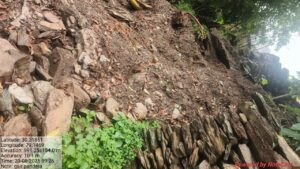interstellar instincts guide
How Animal Instincts Could Guide Interstellar Travel
1. Introduction: From Parrots and Pirates to Animal-Inspired Space Navigation
Building on the intriguing question Could Parrots Navigate Spaceships Like Pirates?, we delve into how natural animal instincts could serve as a blueprint for the future of interstellar exploration. Throughout history, animals such as parrots, migratory birds, and marine creatures have demonstrated remarkable navigation skills that often surpass human technology in certain contexts. Recognizing and understanding these biological capabilities opens new avenues for designing navigation systems capable of guiding spacecraft across the vast, uncharted territories of deep space.
Contents
- The Evolution of Animal Navigation Skills and Their Underlying Mechanisms
- Magnetic Sensing and Cosmic Cues: Nature’s Potential Guides for Space Travel
- Behavioral Adaptations and Decision-Making in Animal Navigation
- Beyond Instincts: Learning from Animal Communication and Collective Behavior
- Ethical and Practical Considerations of Using Animal Instincts as Models
- Case Studies and Future Directions
2. The Evolution of Animal Navigation Skills and Their Underlying Mechanisms
Animals across diverse habitats have developed highly specialized navigation abilities to survive and thrive. Migratory birds, such as the Arctic tern, travel thousands of miles annually, relying on a combination of celestial cues, magnetic fields, and environmental landmarks. Marine animals like sea turtles and salmon also demonstrate impressive migratory precision, often returning to the same breeding grounds over generations.
These navigation skills are rooted in complex biological systems. For example, the magnetoreception mechanism in birds involves specialized cells containing magnetic particles or cryptochrome proteins that detect Earth’s magnetic field. Additionally, celestial cues like star patterns and the sun’s position provide orientation references. These sensory cues are integrated by the animal’s nervous system to produce accurate directional behavior.
| Species | Navigation Mechanism | Environmental Cues |
|---|---|---|
| Migratory Birds (e.g., Swallows) | Magnetoreception, celestial navigation | Star patterns, sun, magnetic field |
| Sea Turtles | Magnetic sensing, olfactory cues | Magnetic fields, water scents |
| Salmon | Magnetoreception, olfactory mapping | Magnetic cues, water chemistry |
3. Magnetic Sensing and Cosmic Cues: Nature’s Potential Guides for Space Travel
One of the most promising biological navigation mechanisms for interstellar application is magnetoreception. Many animals, including migratory birds and marine species, utilize Earth’s magnetic field as a compass. Advances in bio-inspired technology suggest that mimicking these natural sensors could lead to spacecraft systems capable of detecting magnetic anomalies and celestial cues in deep space.
Beyond magnetic sensing, animals also rely on other sensory inputs such as star patterns, gravitational anomalies, and even polarized light to orient themselves. For instance, dung beetles navigate using polarized light reflections, an ability that could inspire sensors to detect star constellations or gravitational distortions in space. Emulating these biological sensors through nanotechnology and bio-engineering could revolutionize navigation systems for future interstellar missions.
“Harnessing nature’s navigational tools offers a promising pathway to develop resilient, adaptive systems capable of guiding humanity through the cosmos.”
4. Behavioral Adaptations and Decision-Making in Animal Navigation
Animals process environmental information through a combination of instinct and learned behavior. Migratory birds, for example, can adapt their routes based on changing magnetic cues or weather conditions, demonstrating remarkable flexibility. This decision-making process involves neural networks that weigh various stimuli to choose optimal paths, often in real-time.
Applying these principles to autonomous spacecraft involves developing AI systems that can interpret sensory data, evaluate environmental conditions, and make navigation decisions dynamically. Bio-inspired decision models, such as neural networks modeled after animal brains, could enable spacecraft to respond adaptively to unpredictable conditions like cosmic radiation, gravitational distortions, or sensor anomalies in deep space.
For instance, bio-inspired AI could mimic the way animals switch their navigation strategies when faced with conflicting cues, ensuring mission resilience and safety in the unpredictable environment of interstellar travel.
5. Beyond Instincts: Learning from Animal Communication and Collective Behavior
Animal groups such as bird flocks and fish schools exhibit collective behavior that enhances navigation accuracy and resource detection. These behaviors are driven by simple local rules and communication signals, resulting in complex, coordinated movements without centralized control.
In space exploration, this concept can be translated into swarm-based systems, where multiple autonomous agents collaborate to explore or maintain spacecraft formations. Designing algorithms inspired by animal colonies—like the coordinated movements of ants or the flocking of starlings—can improve robustness, scalability, and efficiency of interstellar missions.
Such multi-agent systems could dynamically adapt to mission challenges, distribute tasks efficiently, and self-organize in response to unforeseen obstacles, thus mimicking the resilience found in nature’s collective navigation strategies.
6. Ethical and Practical Considerations of Using Animal Instincts as Models
While bio-inspired navigation offers exciting possibilities, ethical issues arise concerning the study and potential manipulation of animal behaviors. Respecting animal welfare and ecological integrity is paramount. Researchers must ensure that technological mimicry does not harm or exploit animals, especially when deriving biological sensors or decision models.
Practically, translating biological systems into spacecraft technology involves overcoming significant challenges. Biological sensors often operate within specific environmental constraints, and adapting them for space requires advanced engineering, miniaturization, and robustness against radiation and vacuum conditions.
“Ensuring human safety and ecological responsibility is critical as we draw inspiration from nature to navigate the cosmos.”
7. Case Studies and Future Directions: Bridging Animal Instincts and Interstellar Navigation
Recent research has demonstrated bio-inspired navigation prototypes, such as magnetically sensitive sensors modeled after bird magnetoreception, tested in terrestrial environments and microgravity simulations. These experiments highlight the feasibility of integrating biological principles into spacecraft systems.
Future experiments could involve deploying bio-inspired sensors and AI decision models in space environments, such as aboard orbiters or deep space probes. As our understanding of animal instincts deepens, so too does the potential to develop revolutionary navigation paradigms—paralleling the adventurous spirit of pirates and parrots, but now guiding humanity through the stars.
In essence, studying and mimicking animal navigation not only honors the pioneering instincts of nature’s explorers but also paves the way for innovative, resilient interstellar travel systems—turning the age-old question of natural guidance into a new frontier of technological discovery.






